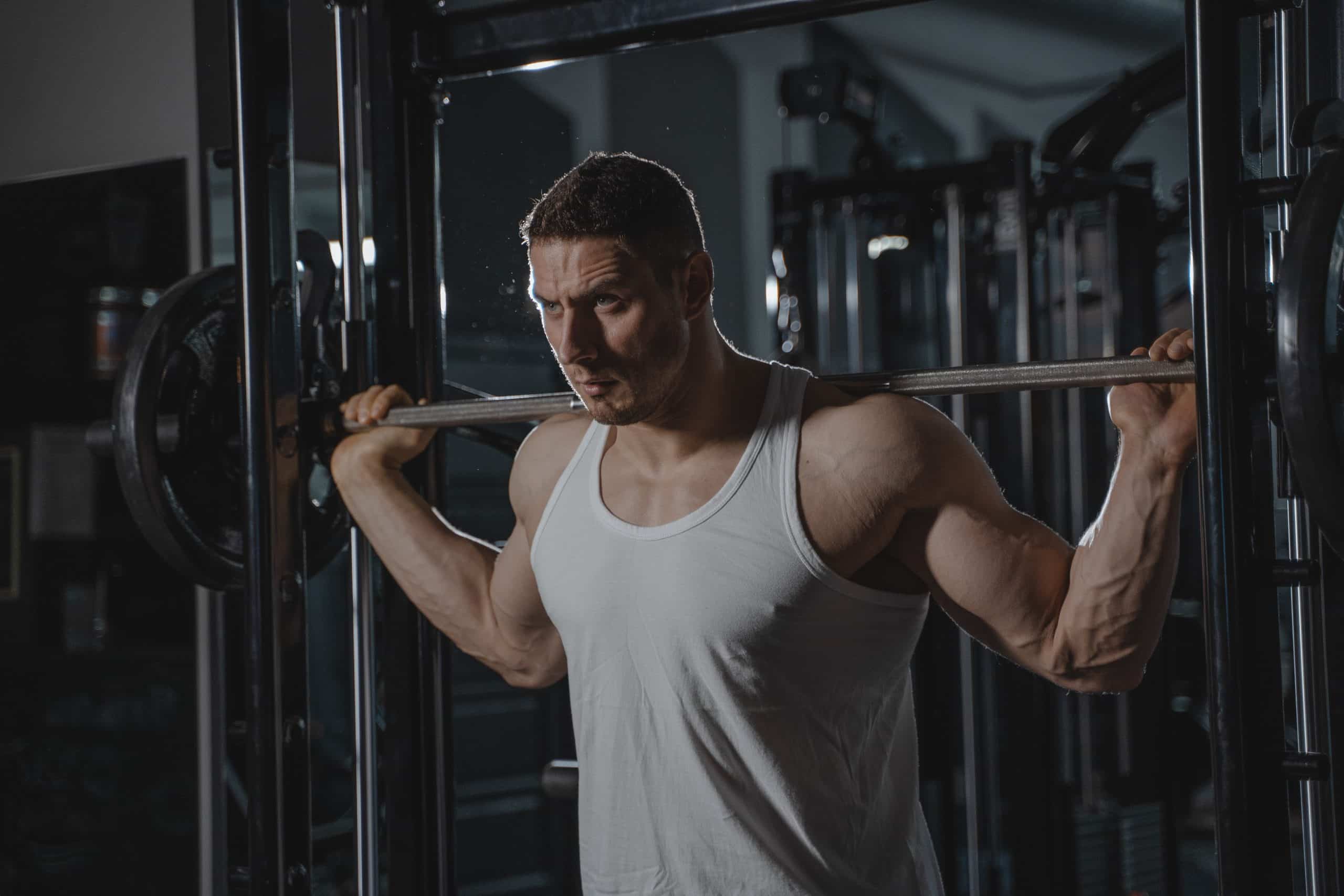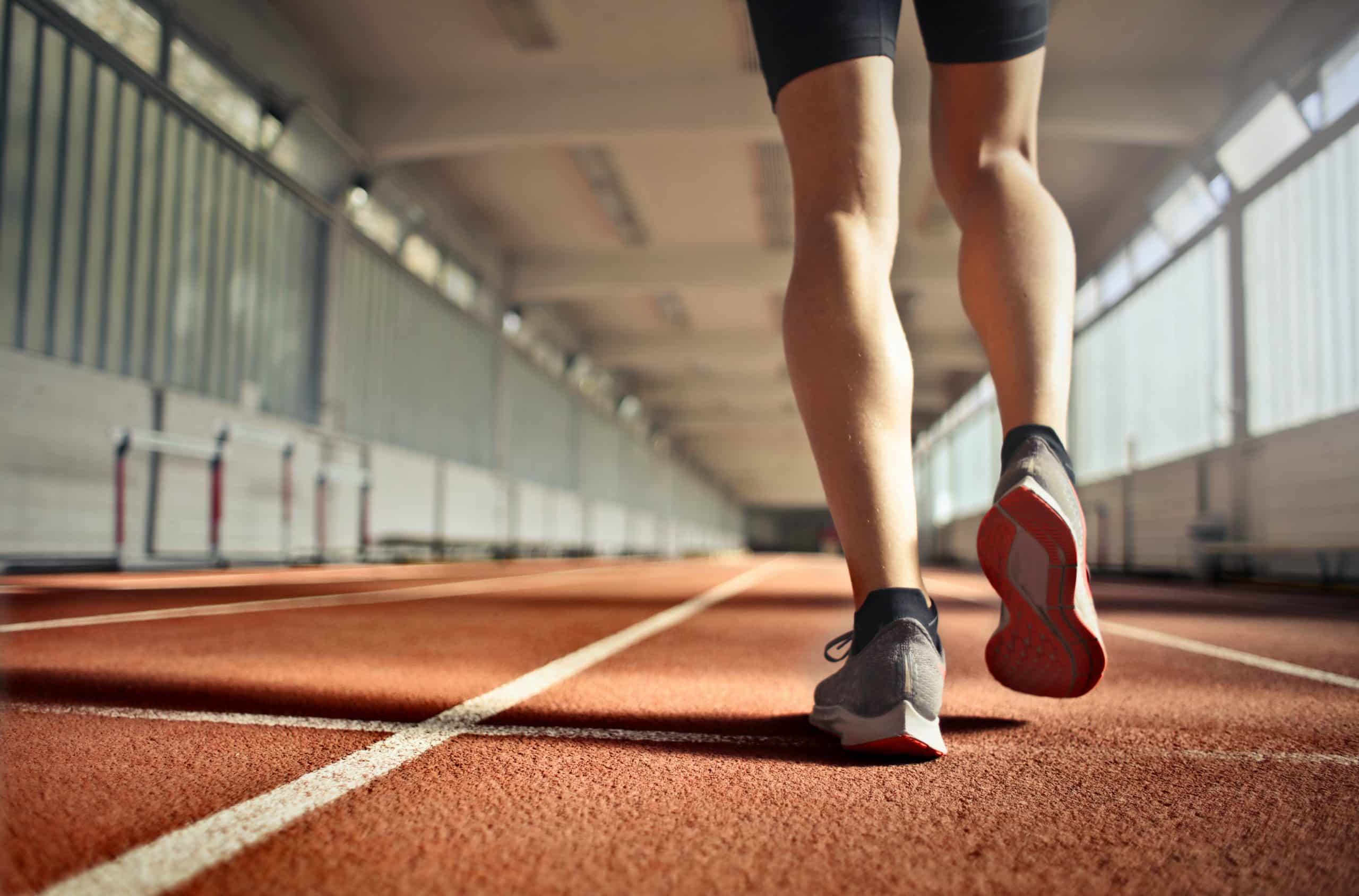The Ultimate Guide to Proper Breathing and Bracing Techniques for Compound Lifts
Proper breathing and bracing can help you generate more power, increase your stability, and reduce the risk of injury during compound lifts.
In this ultimate guide, we'll cover everything you need to know about breathing and bracing during compound lifts. We'll explain the mechanics of breathing and bracing, provide step-by-step instructions on how to perform them correctly, and offer tips for troubleshooting common mistakes.
Whether you're a beginner or an experienced lifter, this guide will help you improve your technique and take your lifts to new heights.
First let's take a look at the five different chapters:
- The Importance of Breathing and Bracing for Compound Lifts: In this chapter, we'll explain why breathing and bracing are so crucial for performing compound lifts correctly and safely. We'll explore the role that breathing and bracing play in generating power, maintaining stability, and preventing injury.
- How to Breathe Properly During Compound Lifts: Breathing is a key component of effective bracing, and in this chapter, we'll provide step-by-step instructions on how to breathe correctly during compound lifts. We'll explain the difference between chest and belly breathing, discuss when to inhale and exhale during each lift, and offer tips for maximizing your breath capacity.
- How to Brace Properly During Compound Lifts: Bracing involves engaging your core and creating tension throughout your body to maintain stability during lifts. In this chapter, we'll explain the mechanics of bracing, offer step-by-step instructions on how to brace correctly for different lifts, and provide tips for troubleshooting common mistakes.
- Common Mistakes and How to Fix Them: Even experienced lifters can struggle with breathing and bracing technique. In this chapter, we'll discuss some of the most common mistakes that lifters make when it comes to breathing and bracing, and offer advice on how to correct them. We'll cover issues like over-breathing, under-bracing, and improper timing.
- Applying Breathing and Bracing Techniques to Different Compound Lifts: While the basic principles of breathing and bracing remain consistent across different lifts, there are some nuances to consider for each exercise. In this chapter, we'll provide specific instructions on how to breathe and brace correctly for different compound lifts, including squats, deadlifts, bench presses, and overhead presses. We'll offer tips on how to adjust your technique for different variations and weights, and discuss how breathing and bracing can help you improve your performance.
1. The Importance of Breathing and Bracing for Compound Lifts
Compound lifts, such as squats, deadlifts, bench presses, and overhead presses, are some of the most effective exercises for building strength, power, and muscle mass. However, they can also be some of the most challenging and risky exercises to perform. Proper breathing and bracing techniques can help you perform these lifts safely and effectively, while also maximizing your performance.
Breathing plays a key role in generating power during compound lifts. When you inhale, you create intra-abdominal pressure, which helps stabilize your spine and generate force throughout your body. When you exhale, you release that pressure and allow for a controlled descent or ascent. The timing and rhythm of your breathing can also affect the efficiency and effectiveness of your lifts.
Bracing involves engaging your core and creating tension throughout your body to maintain stability during lifts. This can help prevent injuries and improve your performance by allowing you to generate more power and maintain proper form. Bracing correctly can also help you recruit more muscle fibers, reduce your risk of injury, and increase your overall strength.
Proper breathing and bracing can help you perform compound lifts with more confidence and control, allowing you to lift heavier weights, achieve better results, and reduce your risk of injury. In the following chapters, we'll dive deeper into how to breathe and brace correctly during compound lifts, and offer tips and strategies for improving your technique.

2. How to Breathe Properly During Compound Lifts
Breathing is a critical component of proper bracing technique, as it allows you to create intra-abdominal pressure and maintain stability throughout your lifts. However, many lifters don't pay enough attention to their breathing technique, leading to inefficiencies, instability, and even injury.
To breathe properly during compound lifts, it's essential to start with good posture and alignment. Stand tall, engage your core, and keep your shoulders down and back. This will allow you to take in a full breath and maintain stability throughout your lifts.
When breathing during a lift, you have two main options: chest breathing and belly breathing. Chest breathing involves taking shallow breaths into your chest, while belly breathing involves taking deep breaths into your diaphragm and belly.
Belly breathing is generally considered more effective for compound lifts, as it allows you to create more intra-abdominal pressure and maintain greater stability. To perform belly breathing, inhale deeply through your nose, allowing your belly to expand fully. Then, exhale forcefully through your mouth, tightening your core and maintaining tension throughout your body.
The timing and rhythm of your breathing are also important considerations during compound lifts. In general, you should inhale before you begin the eccentric (lowering) portion of the lift, and exhale during the concentric (lifting) portion. This allows you to maintain stability and generate power throughout the lift.
By focusing on your breathing technique and incorporating belly breathing into your lifts, you can improve your stability, generate more power, and reduce your risk of injury. In the next chapter, we'll explore the mechanics of bracing and offer tips for performing this critical component of proper lifting technique.
3. How to Brace Properly During Compound Lift
Bracing is a crucial component of proper lifting technique, as it allows you to create tension throughout your body and maintain stability during heavy lifts. Without proper bracing, you're at risk of injury and may struggle to generate the power necessary for effective lifts.
To brace properly, start by engaging your core muscles, including your abs, obliques, and lower back. This will help stabilize your spine and allow you to transfer force from your lower body to your upper body more effectively.
Next, focus on creating tension throughout your entire body. This can include tightening your glutes, quads, and upper back, as well as gripping the bar tightly and setting your feet firmly on the ground. The goal is to create a solid, stable foundation that allows you to generate maximal force during the lift.
During the lift, maintain this tension throughout your body. This may involve holding your breath and creating intra-abdominal pressure, as we discussed in the previous chapter. However, it's important not to over-brace, as this can lead to reduced blood flow and fatigue.
To avoid over-bracing, try to find a balance between stability and tension. You should feel firm and stable throughout your body, but not so tight that you're unable to move fluidly during the lift. It may take some practice to find the right balance, so start with lighter weights and focus on maintaining good form and technique.
By mastering proper bracing technique, you can improve your stability, generate more power, and reduce your risk of injury during compound lifts. In the next chapter, we'll discuss some common mistakes to avoid when breathing and bracing, and offer tips for troubleshooting your technique.
4. Common Mistakes and How To Fix Them
Breathing and bracing are essential components of proper lifting technique, but they can be tricky to master. Even experienced lifters may make mistakes that can lead to inefficiencies, instability, and injury. In this chapter, we'll explore some common mistakes to avoid when breathing and bracing during compound lifts.
Mistake #1: Failing to maintain proper alignment
Proper alignment is critical for effective breathing and bracing technique. If you're hunched over, have a rounded back, or are otherwise out of alignment, you'll struggle to generate force and maintain stability during lifts. To avoid this mistake, focus on maintaining good posture and alignment throughout your lifts, standing tall with your shoulders down and back.
Mistake #2: Taking shallow breaths
Shallow breathing can limit your ability to generate intra-abdominal pressure and maintain stability during lifts. To avoid this mistake, focus on taking deep breaths into your diaphragm and belly, expanding your belly as you inhale.
Mistake #3: Over-bracing
While it's important to create tension throughout your body during lifts, over-bracing can actually limit your ability to generate power and lead to fatigue. To avoid this mistake, find a balance between stability and tension, creating enough tension to maintain stability without sacrificing fluidity of movement.
Mistake #4: Failing to breathe in a rhythmic pattern
Breathing in a rhythmic pattern can help you maintain stability and generate power throughout your lifts. To avoid this mistake, focus on inhaling before the eccentric (lowering) portion of the lift and exhaling during the concentric (lifting) portion.
Mistake #5: Ignoring feedback from your body
Your body can provide valuable feedback during lifts, including cues to adjust your breathing and bracing technique. To avoid this mistake, pay attention to how your body feels during lifts and make adjustments as necessary. For example, if you feel dizzy or lightheaded, you may need to adjust your breathing technique.
By avoiding these common mistakes and focusing on proper breathing and bracing technique, you can perform compound lifts more safely and effectively. In the next chapter, we'll offer some tips and strategies for improving your breathing and bracing technique.
5. Applying Breathing and Bracing Techniques to Different Compound Lifts
Now that we've discussed the importance of proper breathing and bracing technique and some common mistakes to avoid, let's explore some tips and strategies for improving your technique.
Tip 1: Practice with lighter weights
When learning a new technique, it's important to start with lighter weights to avoid injury and focus on proper form. Use this time to practice your breathing and bracing technique and focus on creating tension throughout your body without sacrificing form or stability.
Tip 2: Focus on your breath
Your breath is a crucial component of proper breathing and bracing technique. Focus on taking deep breaths into your diaphragm and belly, expanding your belly as you inhale. Try to breathe in a rhythmic pattern, inhaling before the eccentric (lowering) portion of the lift and exhaling during the concentric (lifting) portion.
Tip 3: Engage your core
Proper bracing technique starts with engaging your core muscles, including your abs, obliques, and lower back. This will help stabilize your spine and allow you to transfer force from your lower body to your upper body more effectively.
Tip 4: Create tension throughout your body
In addition to engaging your core, you should also focus on creating tension throughout your entire body. This can include tightening your glutes, quads, and upper back, as well as gripping the bar tightly and setting your feet firmly on the ground. The goal is to create a solid, stable foundation that allows you to generate maximal force during the lift.
Tip 5: Use visualization techniques
Visualization can be a powerful tool for improving your breathing and bracing technique. Before each lift, take a moment to visualize yourself executing the lift with proper technique, including your breathing and bracing. This can help you stay focused and reinforce proper technique during your lifts.
By incorporating these tips and strategies into your lifting routine, you can improve your breathing and bracing technique and perform compound lifts more safely and effectively. Remember, it takes time and practice to master proper technique, so be patient and persistent in your efforts. Watch this video on the Back Squat to put it all together:
5 Essential Tips to Improve Your Squat Form for Maximum Gains
If you're looking to build strength and improve your lower body fitness, squats are an excellent exercise to incorporate into your routine. However, performing squats with improper form can lead to injury and limit your gains. That's why we've compiled five essential tips to help you improve your squat form and get the most out of your workout. Whether you're a beginner or an experienced lifter, these tips will help you perfect your squat technique and see significant gains.
1. Strong Feet
having strong feet is crucial for overall fitness and injury prevention. Your feet are the foundation of your body and they support your weight throughout the day, making them an essential part of your overall strength.
By focusing on planting your feet firmly on the ground during your squat, you'll also be strengthening the muscles in your feet and ankles. This can improve your balance and stability, which can help prevent injuries both inside and outside of the gym.
Furthermore, having strong feet can improve your overall athletic performance, particularly in sports that require running or jumping. By building strong feet, you'll be able to generate more power and explosiveness in your lower body movements.
So, next time you're performing squats, pay attention to your feet and make sure to plant them firmly on the ground. Not only will this help you maintain proper form, but it will also strengthen the foundation of your body and improve your overall fitness. Try this video below to ease the tension in the foot sole:
2. Knees in-line with toes
Maintaining proper knee alignment is critical during squats to avoid injuries such as ACL tears, knee pain, and other joint issues. Proper alignment means that your knees should follow the direction of your toes throughout the entire range of motion.
If your knees cave inwards during the squat, this is known as valgus collapse, which puts excessive strain on the knees and can cause injury. On the other hand, if your knees push out too far, you can also experience pain and discomfort in your hips and lower back.
To ensure your knees are properly aligned during your squat, focus on driving them outwards throughout the movement. This will help engage your gluteus medius muscles and stabilize your pelvis, keeping your knees in line with your toes.
Additionally, incorporating exercises that strengthen the muscles around the knee joint, such as leg extensions or lunges, can also help improve knee stability and prevent injuries.
Remember, proper knee alignment is key to achieving the full benefits of squats while minimizing the risk of injury. So, pay attention to your form, drive your knees outwards, and incorporate exercises to strengthen your knee muscles to ensure you're getting the most out of your squats.
3. Bracing & Engaging core
Bracing your core is a crucial step to maintain proper squat form and ensure you are activating the right muscles during the movement. It involves contracting and tightening the muscles of your abdominal wall, lower back, and hips to create a stable and solid base for your torso.
When you brace your core, you are essentially creating a natural weight belt that helps to protect your spine by increasing intra-abdominal pressure. This pressure provides added support to the muscles surrounding the spine, reducing the risk of injury or strain.
To brace your core during a squat, take a deep breath and draw your belly button towards your spine. This will activate your deep core muscles, including your transverse abdominis, which wraps around your waist like a corset. It will also engage your rectus abdominis and obliques to help keep your torso upright throughout the movement.
It's important to note that bracing your core is different from sucking in your stomach. Sucking in your stomach is a superficial movement that only engages the outermost abdominal muscles. Bracing, on the other hand, involves contracting the deep core muscles to create a stable and solid base for your entire torso.
Incorporating core exercises such as planks, dead bugs, and cable rotations can help strengthen your core muscles and improve your bracing technique. So, don't forget to engage your core during your squats to improve your form and prevent injury. Watch the video below to see what we mean:
4. Sit back and down
This technique is known as the hip hinge movement and is crucial for maintaining proper squat form. When you sit back and down, you engage your glutes, hamstrings, and lower back muscles, which helps to distribute the weight evenly and prevent excessive stress on your knees.
To master this movement, start by standing with your feet shoulder-width apart and your toes pointing slightly outward. Take a deep breath and brace your core, then shift your weight back onto your heels and slowly lower your body, keeping your chest up and your back straight.
As you descend into the squat, focus on pushing your hips back and maintaining a neutral spine. Your knees should bend naturally as you lower into the squat, and your shins should remain relatively vertical.
Remember to maintain control throughout the movement, and avoid bouncing or jerking at the bottom of the squat. By mastering the hip hinge movement, you can improve your squat form and reduce the risk of injury. Watch the video below to get an in-depth look:
5. Work with a coach
Working with a coach can be extremely beneficial for improving your squat form. A coach can provide you with personalized feedback, helping you to identify any issues with your form and make the necessary corrections. They can also provide you with specific exercises and drills to help you improve your mobility, stability, and strength, which will all contribute to better squat form.
Furthermore, a coach can help you to avoid injury by ensuring that you are using proper form and technique. Squatting with incorrect form can put unnecessary strain on your joints and muscles, which can lead to injury over time. A coach can help you to identify any imbalances or weaknesses that may be contributing to poor form, and provide you with exercises to address these issues.
Finally, a coach can provide you with the motivation and accountability you need to stay on track with your training. They can help you to set realistic goals and create a plan to achieve them, as well as track your progress and make adjustments as needed. Working with a coach can help you to stay motivated and committed to your squat training, leading to improved form and overall strength.
Work with a coach right now: Click here.
5 Must-Try Exercises to Boost Your Running Performance: Plyometrics, Hill Repeats, Strength Training, Interval Training, and Core Workouts
Are you a runner looking to improve your running performance and take your workouts to the next level? Look no further! In this blog post, we'll share five effective exercises to help you boost your running performance. From plyometric exercises to hill repeats, strength training, interval training, and core workouts, we've got you covered. You'll learn how to build explosive power, leg strength, and speed, increase your aerobic capacity and overall fitness, and prevent injuries by maintaining proper form and stability. So, read on and discover how to improve your running game with these must-try exercises!
Plyometric Exercises
Plyometric exercises are an excellent way to improve your running performance. By incorporating exercises such as jump squats, box jumps, and lunge jumps into your workout routine, you can build explosive power, increase your leg strength, and boost your speed. Plyometric exercises also help to improve your neuromuscular coordination, allowing you to move more efficiently and with greater ease while running. Additionally, by increasing your leg strength, you can reduce your risk of injuries such as shin splints and knee pain. Overall, plyometric exercises can have a significant impact on your running performance and make your runs more enjoyable. In our Online Coaching programs we steadily introduce plyometric exercises into our clients' running journey. Below is an example of an exercise to integrate lateral impulses:
Hill Sprints
incorporating hill repeats into your routine can be a game-changer. Running up hills requires more effort and engages more muscle fibers than running on flat ground, which helps build leg strength and endurance. Hill repeats also increase your cardiovascular fitness by forcing your heart and lungs to work harder to deliver oxygen to your muscles. Additionally, running up hills can improve your running form and stride length, as you learn to drive your knees higher and push off with more force. By incorporating hill repeats into your running routine, you can boost your speed, increase your endurance, and take your running performance to the next level.

Interval Training
Interval training is a highly effective way to improve your running performance. By alternating between periods of high-intensity exercise and rest or low-intensity exercise, you can increase your aerobic capacity and overall fitness. Interval training is also an excellent way to burn more calories and improve your body's ability to use oxygen, which can lead to faster recovery times and improved endurance. Additionally, interval training can help prevent boredom by providing variety in your workout routine. By incorporating interval training into your running routine, you can achieve better results in less time and take your running performance to the next level. In our Online Coaching we work with a multiple national champion in Triathlon that creates smart programs to increase your performance! If you're interested in more information, book a call.
Strength Training
Strength training is essential for runners looking to improve their running performance. By incorporating exercises such as squats, lunges, and deadlifts, runners can build leg strength and improve overall body stability. This can lead to a more efficient running stride and reduce the risk of injuries such as ankle sprains and knee pain. Many professional runners, such as Mo Farah and Shalane Flanagan, incorporate strength training into their workout routines to help them achieve better results on the track or road. Strength training also helps to increase bone density, which can reduce the risk of stress fractures. By adding strength training to your running routine, you can take your performance to the next level and achieve your running goals.
Core exercises
it's time to incorporate some killer core exercises into your routine! A strong core is essential for maintaining proper form and stability while running, which can lead to improved running efficiency and reduced risk of injuries. Think planks, sit-ups, and Russian twists – these exercises will help you build the abdominal and lower back strength needed to maintain a stable and upright posture while running. Not only will a strong core improve your running form, but it can also lead to a more efficient running stride and improved running economy. If you need some inspiration, just look at professional runners like Paula Radcliffe and Eliud Kipchoge, who swear by core exercises as an essential part of their training routines. So, if you're ready to achieve your running goals and become a stronger, faster, and more efficient runner, then start incorporating core exercises into your running routine today! This exercise below is a game-changer for a lot of runners because it requires cooperation of adductors, glutes and your core: The Copenhagen Plank:
In summary, improving your running performance involves more than just running more miles. By incorporating plyometric exercises, hill repeats, interval training, strength training, and core exercises into your routine, you can build strength, improve endurance, and reduce the risk of injuries. Whether you're a beginner or a seasoned runner, these exercises can help take your running to the next level.
If you're looking to optimize your running performance, we invite you to book a discovery call with one of our expert trainers. Our team can help you design a personalized workout plan tailored to your specific goals and needs. With our guidance and support, you can achieve your running goals faster and more efficiently than ever before. So, don't wait – book your discovery call today and start your journey towards becoming a stronger, faster, and more efficient runner!


